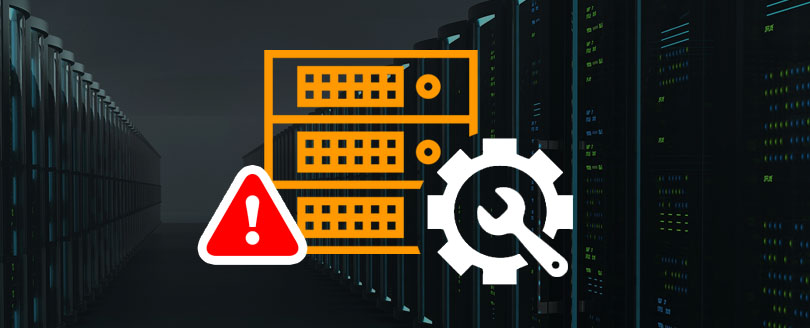Read time 4 minutes
Joint Engine Technology (Jet) error in Exchange is familiar to businesses relying on the Exchange database. The sudden occurrence of errors such as “0xFFFFFC01 JET_errInvalidPath” brings an unwanted pause to your workflow. In most cases, using the Eseutil tool is not productive for fixing these errors, especially for highly corrupted Exchange databases.
The most crucial task in fixing this error is analyzing its nature and the message it is throwing. Properly identifying the reason will help you simplify the recovery. We will discuss valuable ways to fix this error without encountering any data loss.
Understanding the “0xFFFFFC01 JET_errInvalidPath” Error
Sometimes, during the process of mounting a mailbox store or public folder store in MS Exchange Server 2000 or 2003, following error message appears on your computer screen:
ID no: c1041724
Exchange System Manager
An event log describing the preceding error message is also recorded in the Application log that can be viewed using an event viewer. The event log recorded in the Application log contains following information:
Event Type: Error
Event Source: MSExchangeIS
Event Category: General
Event ID: 9518
Date: date
Time: time
User: N/A
Computer: SERVERNAME
Error description
Error 0xfffffc01 starting Storage Group /DC=COM/DC=EXAMPLE/CN=CONFIGURATION/CN=SERVICES/CN=MICROSOFT EXCHANGE/CN=FIRST ORGANIZATION/CN=ADMINISTRATIVE GROUPS/CN=FIRST ADMINISTRATIVE GROUP/CN=SERVERS/CN=ServerName/CN=INFORMATIONSTORE/CN=FIRST STORAGE GROUP on the Microsoft Exchange Information Store. Storage Group – Initialization of Jet failed.
Reasons behind 0xFFFFFC01 JET_errInvalidPath error
Primary reasons behind the occurrence of jet invalid path error are:
- You have specified wrong path for the mailbox store or public folder store that you want to mount. It may happen that the drive letter where the mailbox store or public folder store is located has been changed to another drive letter due to which the software is unable to find the required mailbox store or public folder store.
- You can also get the error message when an antivirus program has blocked read/write access to the drive where mailbox store or public folder store is available.
- Another common reason for the error is a corrupt EDB file. A virus attack or human error can damage the Exchange database, giving rise to this issue. In such a case, you must repair EDB files to save the data.
Reliable solutions to fix the 0xFFFFFC01 Error
To resolve the specified error message and perfectly mount the mailbox store or public folder store in Exchange Server, try the following solutions:
Disable or Update the Antivirus
You should confirm whether the problem has occurred due to antivirus program or wrong file path. To verify that if the problem is due to antivirus, follow these ways:
- Disable the antivirus program for a while.
- After that, again try mounting the mailbox store or public folder store in MS Exchange Server.
If the mounting process will be completed successfully then it means the problem was due to antivirus. In that case, you should obtain the latest antivirus update otherwise you may face the same issue again in the future.
Verify Locations of Storage Groups
If the previous solutions didn’t work, you must verify the location of each storage group in the Exchange Server. Use the following steps to access locations:
- Click Start > All Programs > Microsoft Exchange > System Manager.
- Expand Administrative Groups in which you are facing the problem.
- Now, expand the Server on which you are having the problem.
- Right-click the storage group that contains the mailbox store or public folder store that you need to mount.
- Click Properties.
- Select the General tab.
- Examine the path in the Transaction log location box and in the System path location box. If you found the path wrong, then click Browse to locate the mailbox store or public folder store. In Exchange Server 2000 or 2003, database files are stored at following location:
%PROGRAMFILES%\Exchsrvr\mdbdata
- Click OK.
- Repeat steps 3 to 7 for each storage group in the Server to verify the file location.
If you find any issue with the path, fix it immediately and try to mount the database again. However, if all the storage group location are accurate, then you need to verify the database location for each store in each storage group.
Following steps help you verifying database location:
- Select and expand a storage group.
- Right-click the StoreName (ServerName) and click Properties.
- Select the Database tab and verify the path appearing in the Exchange database box. After that, verify the path appearing in the Exchange streaming database box.
- If any one or both of the paths are found incorrect then click Browse to locate the correct database file.
- Click OK.
- Repeat steps 2 to 5 to verify the path for each mailbox store or public folder store.
- Now, mount the mailbox store or public folder store in Exchange Server.
Adopting a Third-Party Tool to Fix Exchange Server Issue
While working with Exchange Server, the Exchange database file can be damaged anytime due to various known and unknown reasons. It will become very hectic to try different manual ways to find the root cause and then fix the error. Even after executing numerous ways, manual approach does not assure data protection or positive results.
If you face problems due to database corruption while working with Exchange Server, try using Kernel for Exchange Server. This Exchange recovery tool is embedded with modern features that offers diverse functionality in the process of EDB file recovery. Integrated with user-friendly interface, it can also repairs corrupt Exchange database file and helps you continue working with it.
Prominent features of the tool:
- Repair the database with 100% data integrity.
- Retain the original folder structure and data formatting.
- Allows to migrate EDB to Live Exchange.
- Saves the recovered mailboxes to an existing or new PST file.
- User-friendly tool, anyone with or without technical skills can use it.
Conclusion
The frequency of facing 0xFFFFFC01 JET_errInvalidPath error while performing any action in the Exchange database indicates the corruption issue. The above article guides you about the environment of this error and why you experience such an error. We have also mentioned the effective ways to fix this issue in detail. Still, the best way to fix your EDB file corruption and avoid such problems is by employing Kernel for Exchange Server software, which helps you fix EDB corruption and restore data quickly.
Frequently Asked Questions
Ans. This error is generally seen in Microsoft Exchange Server 2000 or 2003. It occurs when the user is trying to mount a mailbox store or public folder store in the Exchange Server.
Ans. If the path of any of the storage sroup or the database location for each store in each storage group is not correct, you will get the error 0xFFFFFC01 JET_errInvalidPath. However, many users have also pointed out a corrupt database as the cause of the problem.
Ans. Verify the path for each storage group in Exchange Server and fix any path that is incorrect. However, if the issue is due to a corrupt database, then you must use an Exchange Data Recovery tool to remove corruption and fix the issue.







